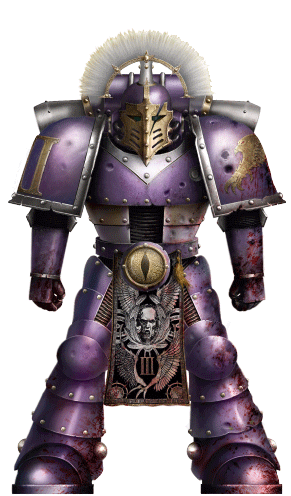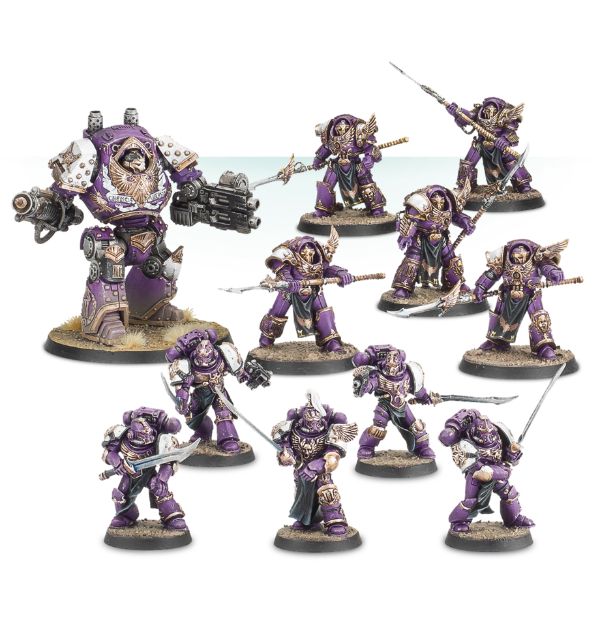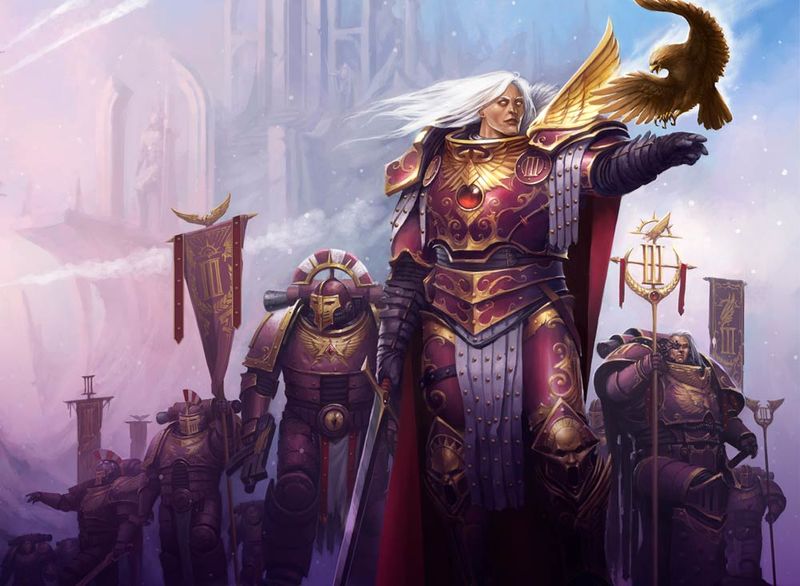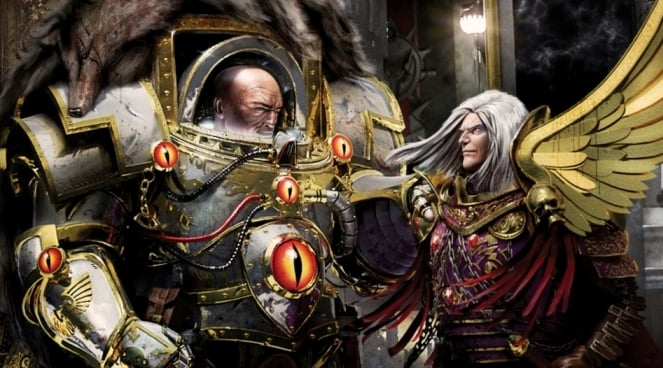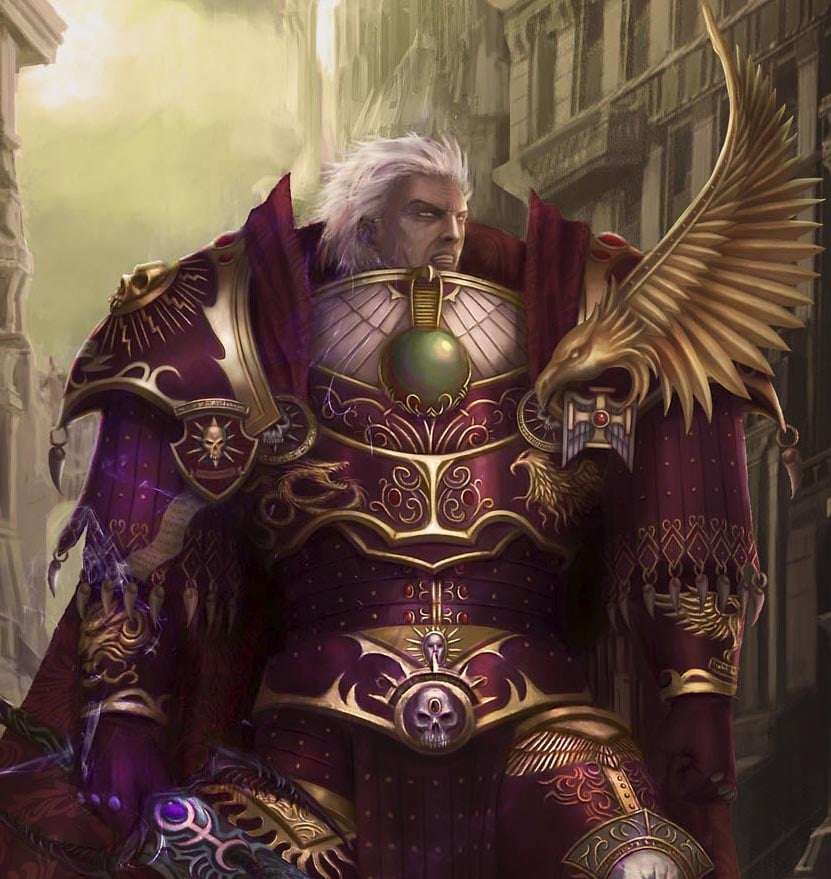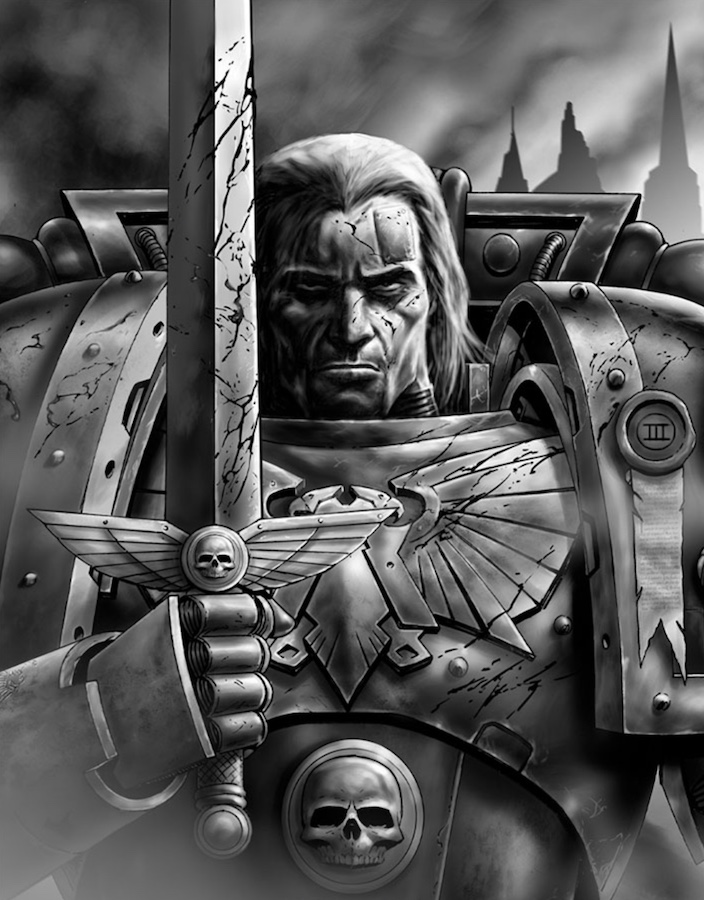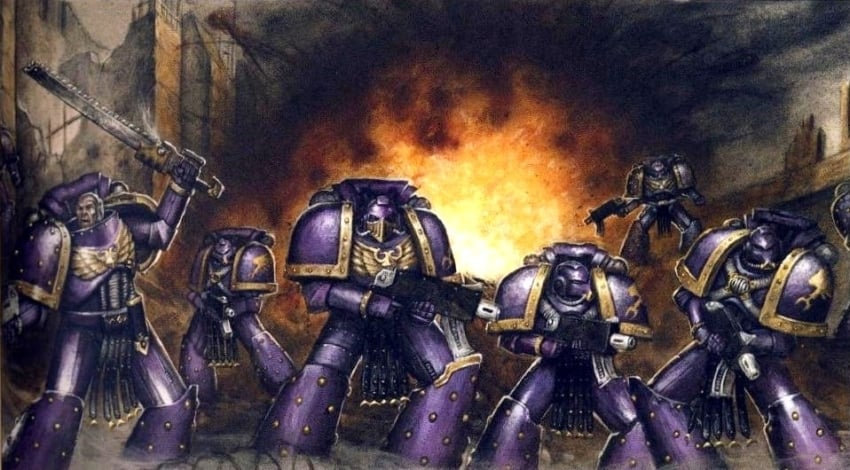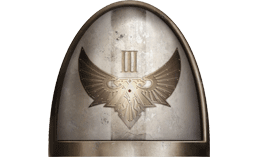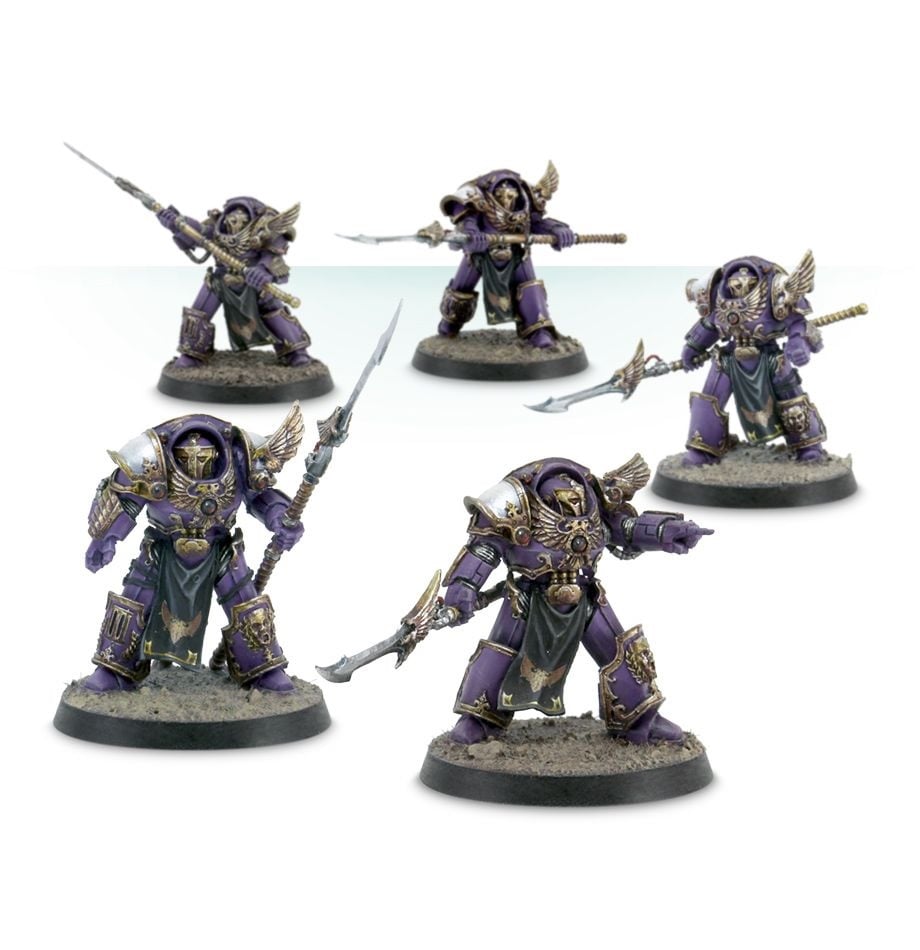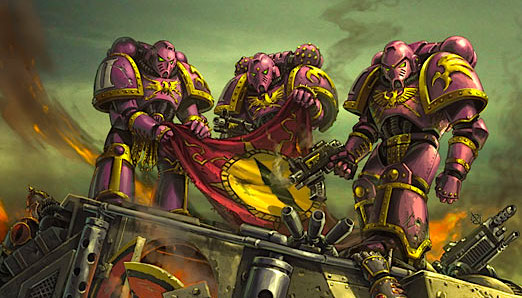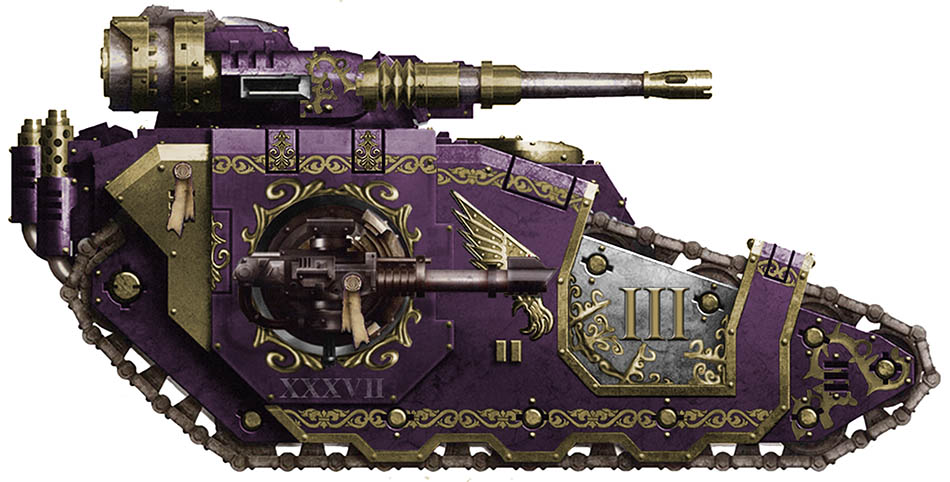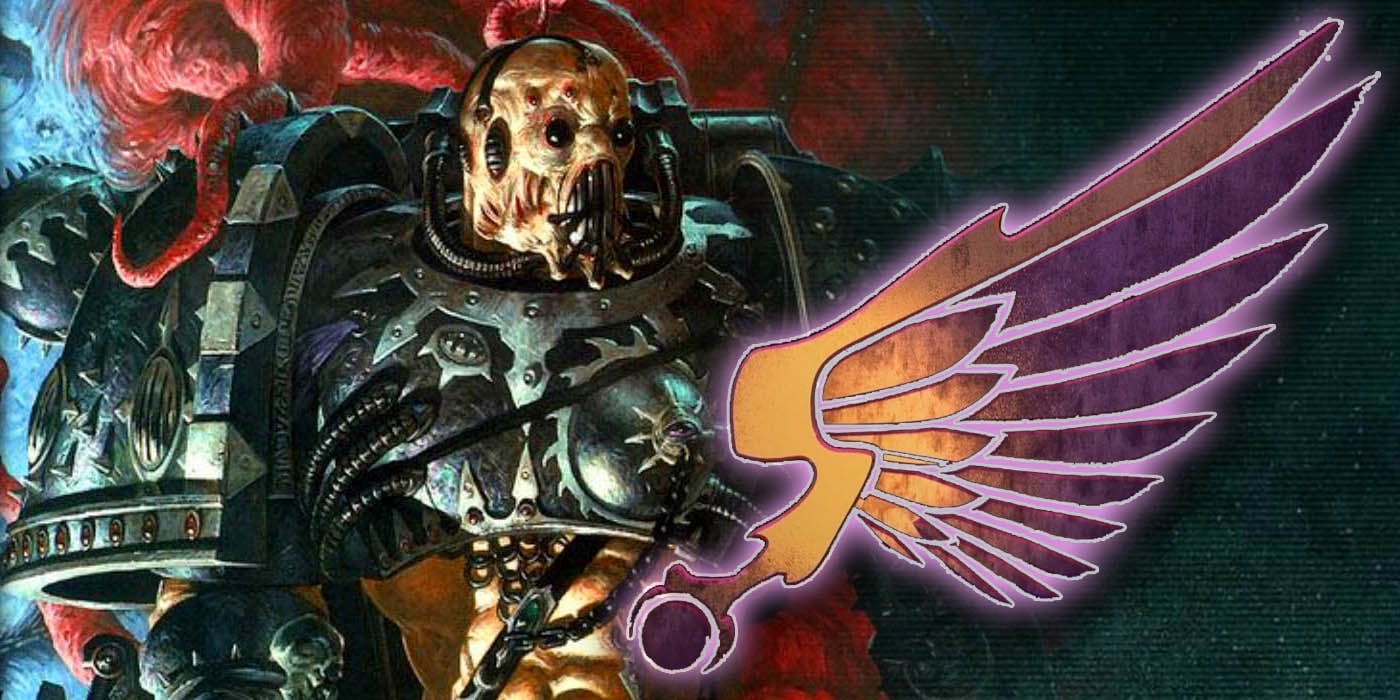Warhammer 40K: Origins Of the Emperor’s Children
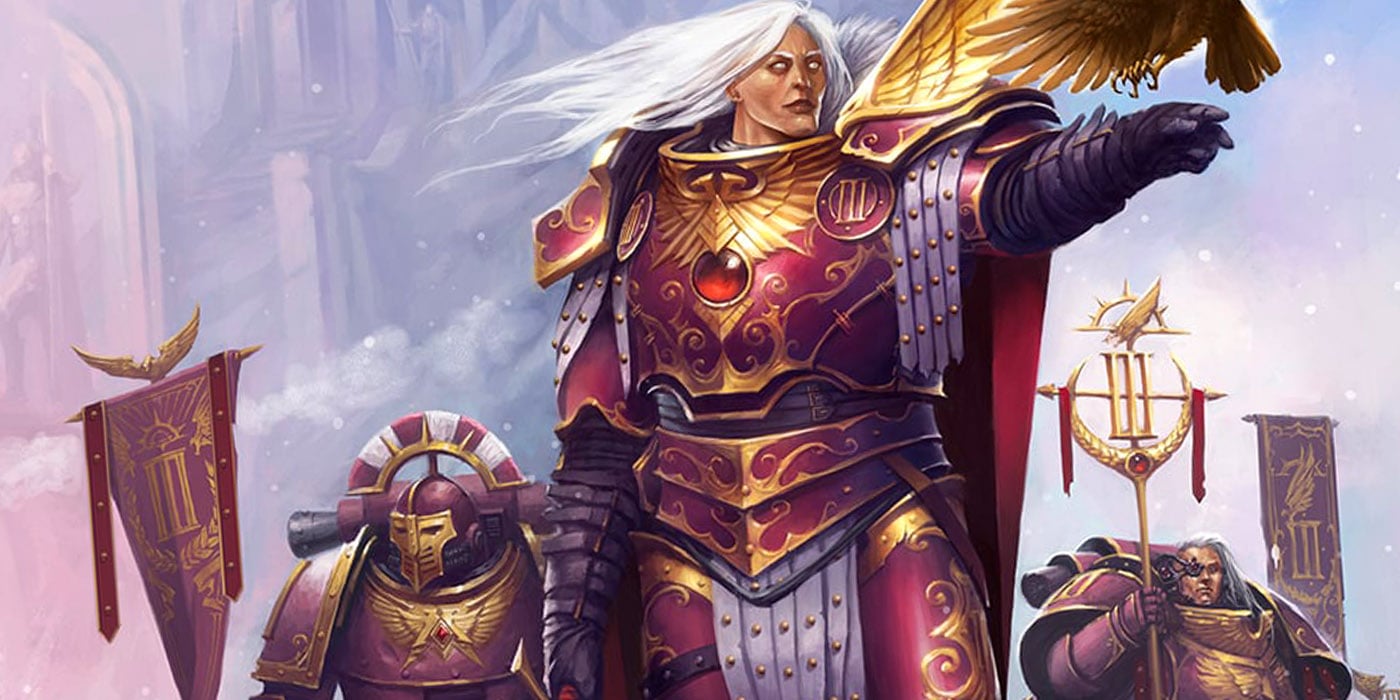
With a new 40K army just arrived, learn of the early days of the twisted and vile Emperor’s Children – once a paragon of the Emperor’s perfection on the battlefield.
Early Emperor’s Children Legion History
Unification War
The earliest recruits to the Emperor’s Children, then known as III Legion, were recruits gathered from Europa during the Unification Wars. Noble houses, such as House Loculus of Komarg, selected the finest of their youth and gave them to the Emperor following their defeat by his Thunder Warriors as tribute for their previous defiance. Following the Houses of Europa’s lead, other noble Terran dynasties also sent their children to fight in the III Legion. This was rumored to be the source of the Legion’s adopted name, the Emperor’s Children, a name that was re-affirmed later following Fulgrim’s rediscovery.
One distinction with the early days of the Emperor’s Children was that they willingly cooperated with and even led the young Imperial Army into battle during the Unification Wars, something other Legions saw as disdainful. Leading “lesser” troops seemed natural for the aristocrats of the Legion. Perfectionists even before having been reunified with their Primarch, the III Legion became known to efficiently execute and exceed the Emperor’s own expectations.
READ MORE: How To Play Emperor’s Children in Warhammer 40K
Great Crusade & “The Blight” Strike Down the Legion
The Legion was frequently given diplomatic and emissary-protection missions by the Emperor and were known by some as His heralds, the marines painting their armour imperial purple to signify their mission, emblazoned with a thunderbolt and rayed sun. The right to bear the Emperor’s personal standard, the Palatine Aquilla, was granted following the Proximan Betrayal when the XVIth Cohort were all killed in defense of the Emperor, wounded by a Vortex weapon, during a surprise insurrectionist attack at the ceremonial plaza during the Imperial Compliance ceremonies.
Despite this status, the Legion was struck with disaster within a year of Proxima following the pacification of the Selenar gene-cults of Luna and the Martian Compact, when a substantial portion of gene-seed reserve was lost during its transit to Luna. It was then found that a Selenite plot had corrupted gene-seed stock held on Terra with what was known as ‘the Blight’, causing organ degeneration that then spread more widely in the Legion.
Rapid deployment of reserves, purging the infected, and the establishment of methods such as salvaging Progenoid Glands from its dead warriors helped to reverse the decline, but the Legion never recovered from this incident, and thus were always among the smallest of the Legio Astartes. While other legions such as the Ultramarines, Imperial Fists, and Luna Wolves all exceeded the 100,000 mark, the III Legion numbered only in the hundreds.
Emperor’s Children Discover Fulgrim
Following his rediscovery on Chemos, Fulgrim was placed at the head of his Legion. Fulgrim addressed the mere 200 Marines upon their first meeting, stating that they would go out into the Galaxy and spread the wisdom of the Emperor. “We are His children,” the Book of Primarchs relates he told them, “Let all who look upon us know this. Only by imperfection can we fail him. We will not fail!” Following this address, the Emperor named the IIIrd Legion the “Emperor’s Children”.
As they were so few in number, the Emperor’s Children were placed under the command of the Primarch Horus of the Luna Wolves, and they would fight together for almost a century until Horus’ promotion to Warmaster following the Ullanor Crusade. Horus and Fulgrim grew close to one another, with eventual dire consequences for the Imperium.
Swollen by new recruits drawn from Chemos and Terra, the Emperor’s Children finally mustered the strength to undertake a crusade alone, and Fulgrim proudly led his warriors into the unknown at the head of the 28th Expedition Fleet. To many worlds he brought the rule of the Emperor, crushing any resistance in the certain knowledge that any who fought against the Emperor fought against humanity itself. This wish to achieve perfection met its martial zenith during their first major campaign since parting with the Sons of Horus, the Cleansing of Laeran, where the Emperor’s Children met an alien foe that offensively echoed their ideals. The Laer were judged so formidable by the Adeptus Administratum that it was feared any attempt to subjugate them would take over a decade. The Emperor’s Children scoured them from their home-system in a month. This titanic effort was a notable feat of arms perhaps achievable only by Fulgrim’s legion. However, it cost them dear; 700 marines perished with over 4,200 being injured. Shortly after the campaign, the Emperor’s Children fought alongside their closest brethren, the Iron Hands, against the Diasporex.
Emperor’s Children – Early Horus Heresy
When the events that led to the Horus Heresy erupted, Fulgrim rushed to the Warmaster’s side, attempting to reason with his old friend. Instead, Horus seduced him, playing upon his love of flawlessness to weaken Fulgrim’s loyalty to the Emperor. Although Fulgrim initially resisted and wanted to speak out against Horus, the weapon he had taken from the Laer temple actually contained a daemon of Slaanesh. This daemon had been whispering to Fulgrim since he picked it up and weakened his resolve to the point where Horus was able to sway him.
The rot spread from Fulgrim to his Lord Commanders, then to company and squad leaders, and finally all but a bare handful of Marines followed Slaanesh rather than the Emperor. The remaining loyalists, led by Saul Tarvitz, a Captain of the Emperors Children, fought bravely on Isstvan III but were eventually overwhelmed as Horus, and the three Primarchs who had already declared for him wiped out those forces they believed would remain loyal to the Emperor. The Legion then gleefully proceeded to aid in the destruction of the arriving loyalist legions. After the fighting on Istvaan III, Fulgrim entered the Heresy proper with approximately 50,000 marines.
Pre-Heresy Emperor’s Children Organization and Tactics
From its perilous beginning, the Emperor’s Children Legion continued to grow until it met its eventual end in the Eye of Terror. Fulgrim selected a few individuals, the bravest, strongest and noblest, to become Lord Commanders, called by Sanguinius the ‘Princes of War, who were each given authority over the Company commanders. Fulgrim taught the Lord Commanders personally, taking care that they were worthy of the honor of being the representatives of the Emperor. In turn, the Lord Commanders passed Fulgrim’s words on to the officers under their command and them to their squads. In this way, through their leaders, each Space Marine of the Emperor’s Children Legion followed the Emperor himself. To honor the Emperor, they strove for perfection in all things: battlefield doctrine was obeyed to the letter, tactics, and strategy were studied in minute detail and perfected, and the Emperor’s decrees were memorized by every Space Marine, adhered to in every way. While the Emperor’s Children, like most legions, considered the Emperor a man, not a god, their reverence and adoration for him bordered on the fanatical.
The Emperor’s Children developed a very rigid combat methodology that was reflected in their order of battle. By the time Fulgrim led them into rebellion his Legion comprised 11,000 marines organized into 30 Millennials, the first ten of which were led by a Lord Commander. As each Space Marine looked to his superior officer for guidance, each Company inherited its manner and practices from its Commander. Though this was the case with many Legions, the Emperor’s Children had a strength of devotion to their leaders that was almost unmatched.
The Legion strove for perfection in all their endeavors and worked continuously to perfect their military operations. Each and every Space Marine trained almost ceaselessly for his assigned task, whether it be a foot soldier, driver, gunner, scout or sniper. The Legion employed no Librarians, as the genetic mutation that allowed a psyker to access the warp was considered a flaw. Nothing considered a flaw would be allowed in the Legion.
Every aspect of battle was analyzed and used to the Emperor’s Children’s advantage, from terrain and weather to deployment or reserves. As well as standard formations the Emperor’s Children also fielded many specialized units, such as the lascannon equipped ‘Sun-Killers’, the duelist ‘Brotherhoods of the Palatine Blades’, the Primarch’s 200 strong ‘Phoenix Guard‘, and the elite assault companies ‘Wings of the Phoenician‘ whose commander bore the title ‘Eagle King’.
In combat the Emperor’s Children were as brave as any Space Marine who ever lived. Sustained not merely by the example of their peers but by a deep individual belief in their duty to their superiors and the Legion as a whole, they fought to the best of their abilities in all conditions, whether the battle was a massive attack or a simple patrol. It was widely believed that no Space Marine of the Emperor’s Children had ever been routed in battle. Similarly, the Legion was highly demanding of forces allied with it – signs of hesitation or inefficiency within the Imperial Guard or even their brother Space Marines were not tolerated. The principle of leading by example was ingrained into every fiber of the Emperor’s Children, and they had little patience for any other approach. Fulgrim embodied these principles, and when he entered combat he would lead his Legion from the very front.
The Legion had a highly restrained tactical ‘rulebook’ that they attempted to apply to all combat situations. For example, ground assaults were to be accompanied with both heavy weapon and air cover; the Emperor’s Children looked to Land Speeders for the latter purpose. When a particular aspect of their textbook approach to war broke down (again, for example, no air cover being available), the Legion would still fight with determination, while an alternate tactic was selected from their repertoire by the commanding officer. Fast attack was seen as a preferred style by the Legion however, and the Legion made heavy use of high speed vehicles such as the jetbike, both for its swift and elegant style, as well as the practical consideration that the Legion could not sustain the same levels of attrition that some others could.
~ Steel your soul my friends, for if such a legion dedicated to perfection, can fall to the Ruinous Powers… any can.

